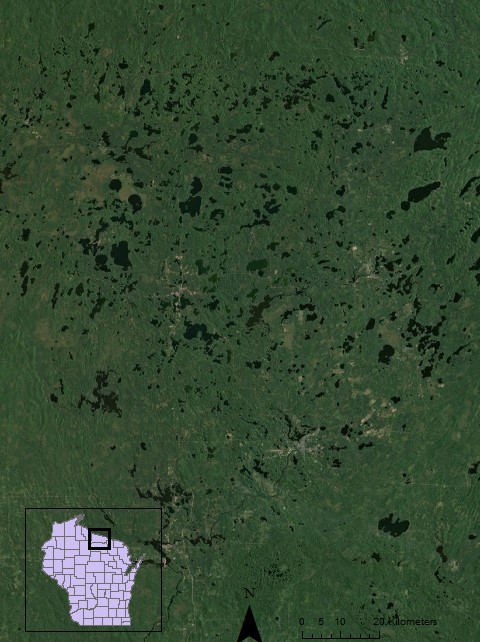Posted 03/11/21
In lake-rich areas such as northern Wisconsin, flying insects may be especially important to supporting foods webs, yet little is known about how flying insect abundance varies over the course of the warm season and what landscape factors affect insect abundance. By conducting insect trapping we determined that there are several peaks of insect abundance during the summer and different insect groups respond differently to landscape factors.
Considering their outsized importance as prey for so many species one would assume that patterns of insect abundance and their determinants have been well-studied. On the contrary, insect ecology is poorly understood and documented. Our study sought to gain an understanding of the subgroup of insects that fly, with a particular emphasis on groups that spend part of their life in lakes and streams.

We conducted insect trapping over three years in the forest landscape of northern Wisconsin, near UW-Madison’s Trout Lake Research Station. We trapped insects May-August around five different lakes and identified them in the lab.

There were several patterns that stood out. Flying insects tended to be many times more abundant in nearshore areas compared to interior forests. Different groups of insects showed different patterns. Diptera, including deerflies, midges, and gnats were the most abundant insects overall. As expected, emergent aquatic groups such as midges, mayflies, and dragonflies were more abundant in nearshore areas while beetles and thrips were more abundant in forest interiors. There were also multiple peaks of abundance through the season with large emergence events of midges and mayflies driving much of the pattern. In addition, local canopy cover was negatively correlated with insect abundance.
We observed birds, bats, and fish consuming flying insects. Abundance of these insect predators likely tracks the abundance of their insect prey. In addition, insects perform other ecosystems services such as pollination and nutrient cycling. Understanding the patterns and drivers of insect abundance can help us better understand northern Wisconsin forest ecosystems.
Story by Schilke, Paul
